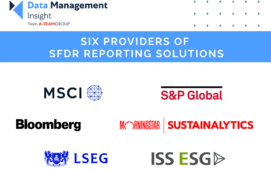Although a lot has been said about the data management impacts of systemic risk monitoring, data managers must not lose sight of the bigger picture, Nick Skinner, head of data management strategy at custodian bank Northern Trust, warned attendees at this week’s EDM Council and Headstrong event in London. The push by regulators to more closely track systemic risk may impact data management practices, but its effects are much more wide reaching, he said.
Northern Trust itself has hired a dedicated executive to monitor systemic risk developments, who operates independently from the data management team. This is indicative of the importance being placed on the subject by a large global custodian such as Northern Trust, although not many others have made such appointments public.
Skinner noted that there are a lot of unknowns about how the monitoring of systemic risk will play out, as it is relatively early days and regulators have not yet articulated the details and practicalities. The European Systemic Risk Board (ESRB) and the US Office of Financial Research have yet to be established and there is little indication about the reporting they will require from industry participants.
The EDM Council managing director Mike Atkin suggested that these bodies would introduce a lot more in the way of ad hoc reporting, but not all panellists agreed. Peter Serenita, global head of data management for client onboarding and account maintenance at HSBC, contended that this reporting could potentially be another to add to the growing list of reports to be submitted to the regulators on a periodic basis. “At the moment we supply reports with a lot of summarised information to the regulator but this data will likely be taken to a whole new level of granularity for systemic reporting purposes,” he said. “This will then have a significant impact on firm due to the requirement for the delivery of consistently detailed data.”
The complexity of the challenge ahead of the regulators is also being under-appreciated, added Serenita. He indicated that regulators need to look beyond the reference data supply chain to the full transactional lifecycle in order to properly assess systemic risk. This brings into the equation the various stages of the transaction lifecycle’s impact on entities and their relationships to each other, such as custodians and clearing houses. “They need to understand and appreciate the full complexity of the web of linkages,” he said.
Julia Sutton, global head of reference data, including customer accounts and onboarding, for the Royal Bank of Canada (RBC), warned that the industry should also be mindful of the dangers of regulators getting involved in raw data. “There is always the danger of garbage in, garbage out,” she said.
Subscribe to our newsletter




